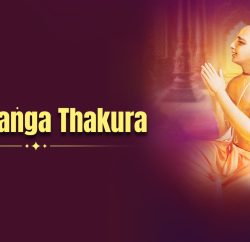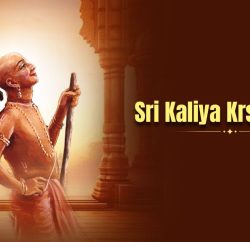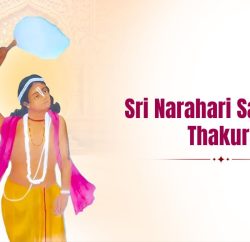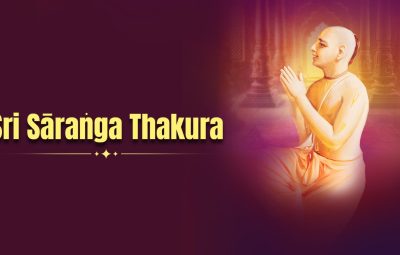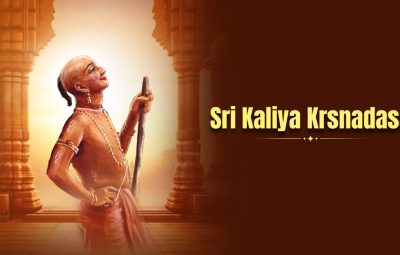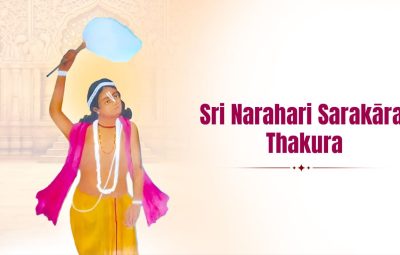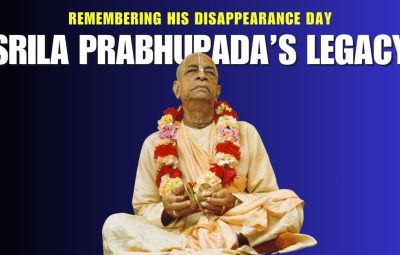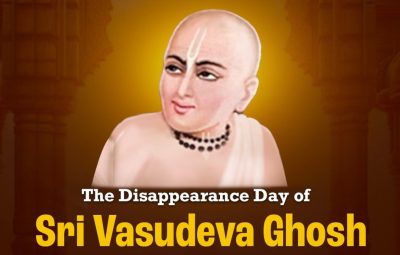Goddess Durga’s role, as Krishna’s supreme power within the material world, assisting in His mission, exemplifies the truth that all energies serve their source, the Supreme Lord.
The nine days preceding Vijaya Dashami are celebrated as Navaratri, honouring the valour and victory of Goddess Durga. Mounted on a lion, she fought the mighty demon Mahishasura for nine days and vanquished him on the tenth. During Navaratri, devotees worship her in various forms.
The tenth canto of Srimad Bhagavatam reveals the connection between the Supreme Lord Krishna and Goddess Durga, while narrating the divine advent of Krishna.
Krishna’s Advent on Earth
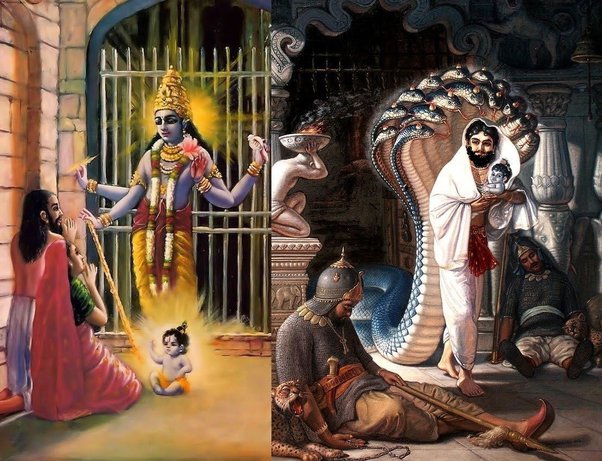
About five thousand years ago, towards the end of Dvapara-yuga, Mother Earth was burdened by the rule of demonic kings. Lord Krishna, responding to the prayers of the demigods, descended into this world with the mission to annihilate the wicked and uplift the pious.
Krishna chose to appear in the Yadu dynasty as the son of Vasudeva and Devaki. This divine plan set the stage for a series of extraordinary events that revealed the role of Durga devi in Krishna’s appearance.
The Prophecy That Terrified Kamsa
On the day of Devaki’s marriage to Vasudeva, her brother Kamsa himself drove their chariot with pomp and affection in Mathura. Suddenly, a celestial voice thundered from the sky, announcing that the eighth child of Devaki would kill Kamsa.
Horrified, Kamsa immediately seized Devaki, intending to kill her. Vasudeva, with calm reasoning, pleaded for her life and promised to hand over every child born of Devaki. Kamsa relented and spared her.
Imprisonment and Cruelty
When Devaki gave birth to her first child, Vasudeva dutifully presented the baby to Kamsa. Pleased, Kamsa spared the child, believing only the eighth child would be the cause of his death.
But the sage Narada, wishing to hasten Krishna’s descent, informed Kamsa that Nanda Maharaja and the residents of Vrindavana, as well as Vasudeva and all his relatives and friends, were actually demigods. Alarmed, Kamsa realised that since the demigods had already appeared, Lord Vishnu must soon descend. He at once imprisoned Vasudeva and Devaki.
Year after year, as Devaki gave birth to a child, Kamsa mercilessly killed them, fearing each one could be Krishna. He also grew increasingly hostile toward the Yadu dynasty, into which Krishna was to take His birth.
This cruelty continued until Devaki’s seventh pregnancy—when Yogamaya intervened.
The Mission of Yogamaya
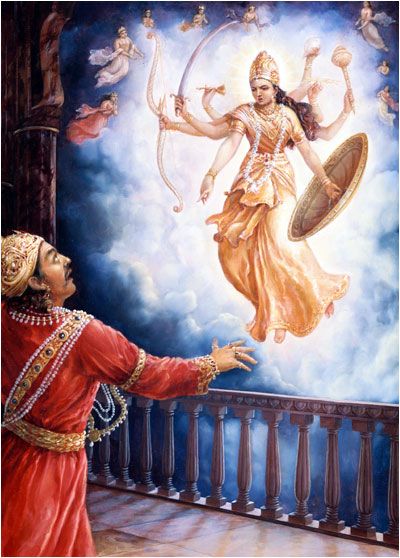
Yogamaya is the Lord’s internal energy, and Durga devi is her expansion. When Devaki conceived her seventh child, it was none other than Ananta Shesha, the thousand-hooded form of the Lord. Krishna instructed Yogamaya to transfer Ananta Shesha to the womb of Rohini, another wife of Vasudeva, who was living safely in Vrindavana at the house of Nanda and Yashoda.
The Lord then revealed His plan to Yogamaya:
“After this arrangement, I am personally going to appear in the womb of Devaki. Then I shall appear as the son of Devaki and Vasudeva. And you shall appear as the daughter of Nanda and Yashoda.”
He also declared that since she would appear as His sister and quickly fulfil the desires of her worshippers, people would honour her in many forms—Durga, Bhadrakali, Vijaya, Vaishnavi, Kumuda, Chandika, Krishna, Madhavi, Kanyaka, Maya, Narayani, Ishani, Sharada and Ambika.
When Yogamaya transferred Ananta Shesha from Devaki’s womb to Rohini’s, people believed Devaki had miscarried.
The Divine Birth and Secret Exchange
Soon after, Lord Krishna, with His full potencies, first manifested in the mind of Vasudeva, and then transferred to the mind of Devaki.
When the time arrived for His appearance, the cosmos became harmonious. Auspicious signs abounded, and an atmosphere of peace and joy pervaded the world.
Then, in the darkness of night, Krishna appeared before Devaki. Vasudeva beheld the radiant four-armed child, bearing divine weapons and adorned with ornaments. Awestruck, Vasudeva and Devaki offered heartfelt prayers.
Moved by their fear of Kamsa, Krishna instructed them to carry Him to Gokula and exchange Him with the baby girl just born to Yashoda. He then assumed the form of an ordinary infant.
Yogamaya displayed her mystic power: the guards and residents of Kamsa’s palace fell into deep sleep, and the doors of the prison opened on their own. Though it was a dark night, Vasudeva could see as clearly as in daylight. Carrying Krishna, he crossed the river Yamuna, reached Gokula, and exchanged Him with Yashoda’s daughter. He then returned to the prison undetected, where the doors locked again as before.
The Revelation of Goddess Durga
When Kamsa heard of the birth, he rushed to the prison. Ignoring Devaki’s desperate pleas, he seized the child and tried to dash her against a stone. But the baby slipped from his hands, rose into the sky, and revealed herself as the eight-armed Goddess Durga—the younger sister of Lord Vishnu. She held a bow, sword, arrows, conch, disc, club, shield and lance in her hands, and was resplendent with ornaments and flower garlands.
The demigods presented the Goddess with various articles and offered their respective prayers.
From above, Durga-devi rebuked Kamsa:
“You rascal, how can you kill me? The child who will kill you is already born before me somewhere within this world. Don’t be so cruel to your poor sister.”
After this, she became known by many names in different parts of the world.
Navaratri reminds us not only of Durga devi’s victory over Mahishasura but also of her role as Krishna’s sister, aiding His divine birth and mission on earth. She exemplifies the truth that all energies serve their source, the Supreme Lord—working together for the protection of dharma.
On this auspicious occasion, let us seek the blessings of Goddess Durga for steady advancement in our devotion to Lord Krishna, undisturbed by material obstacles.


